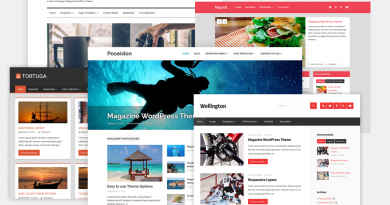Part 1 – Getting Started – Why a Blog?
Why would you want to incur the time and cost to setup and maintain a blog? You can decide whether the benefits outweigh the costs.
Gain Control Over Your Content
First, many marketplaces (Amazon, eBay, and others) restrict the information you can provide about your products. For example, Amazon, unless you are a large enough company to be a “partner” will not currently let you post product videos. Have a short product demo? Nope. Have a video explaining how to assemble your product(s)? Nope. Want to show a video on how to troubleshoot your product? Nope. Yes, you can post them on YouTube only to discover Google has sold ads to your competition using your product as the “bait”. You can go to a hosted video site like Vimeo (a good site) only to find that the same marketplaces block links to external sites in the name of security. In other words, you cannot show your products in the best light when you work under a set of marketplace rules designed to protect the marketplace first, “their” customers second, and your business last.
Provide Additional Product Info
Secondly, you may have additional product information which does not fit in the limited product information you can post on the major marketplaces. This could include assembly instructions, product usage ideas, customer case studies, or a hosted customer forum where ideas can be shared. Maybe customers have shared a new and interesting application for your product. Sharing this information could increase sales but you cannot put this information on your marketplace listing. Or, it will not fit in the five lines you get for your product description. You can risk your marketplace membership by attempting to bypass their rules, but most businesses don’t feel the risk is worth being banned. A blog gives you the flexibility to post information that both prospects and customers can use.
Gain Control Over Customers
Third, maybe you feel that your customers should be your customers. Amazon treats sellers as vendor-managed inventory suppliers and customers are Amazon’s property, not yours. You, according to marketplace rules, cannot offer promotions to “their” customers, sell add-on products or offer extended warranties, or otherwise engage in any post-transaction communication with the people or companies that purchased your products. Someone cancels an order, you can’t present them with a teaser follow-up offer. Someone buys product “A” and you find most customers then also purchase product “B”. Marketplaces will not let you reach out to “their” customers with a new sales offer. With a blog connected to your webstore, your prospects and customers remain yours.
Establish a Direct Relationship
Next, a blog is a soft sell approach. The objective is to establish a relationship with your prospects. Let them get to know your business, your products, and your services. You can provide prospects with much more information about your products or services than you can with a product listing. They come for the content which may lead them to going to your store. If you sell a complex product or service, something other than just an impulse purchase, then a prospect will want to learn more before proceeding to a purchase. A blog can be that gateway for your prospects to join your customers.
Improve Google Search Results
Lastly, the Google search engine “black box” supposedly increases your webstore’s search ranking if you operate an active blog. As no one really knows how the search engine ranks content (not paid ads but “organic” search), this is an educated guess. Even if it is an accurate guess, Google could change the search ranking algorithms at any time so this factor, when compared to the other benefits of running a blog, should be treated as icing on the cake. Nevertheless, an active well managed blog provides another point of entry for your store which is an important benefit.
Tradeoffs
OK…so what are the downsides? After the initial cost and effort to get your blog up-and-running, you must be willing to commit the resources (time, money, or both) to produce meaningful content for your blog. Writing the first ten or twenty blog posts is easy. Everyone running a business has a few ideas tucked away in the back of their brains. It’s after you’ve picked the low hanging fruit that keeping a blog running starts to take more time and effort. Hire a bunch of writers? Everyone has been to sites where the content is the generic garbage that is next to worthless. The content is one step above clickbait. It includes enough “keywords” to get it listed in the Google search results, but doesn’t really say anything useful. So they got you there, but most likely you will leave the site quickly and are unlikely to return – we’ve all been to these types of blogs before. On the other hand, we’ve all been to sites that have great content. You go back multiple times. Why you may not always agree with the content, you feel the writer is knowledgeable about their subject. You follow the site for ideas. You may purchase something or you may simply contribute a small amount to support the site. Or not, but you engage with the site. That is a good blog and it is hard to keep one running over the long haul.
Next…getting started


